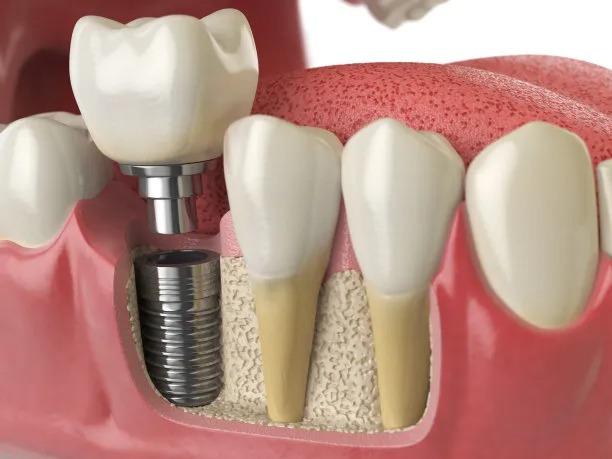The Painful Journey and Healing Process After Extracting a Tooth for Better Oral Health
Summary: Extracting a tooth is a common dental procedure that can lead to a painful journey followed by a healing process crucial for restoring oral health. This article explores the stages of discomfort and healing experienced after tooth extraction, delving into the methods for pain management, dietary adjustments, emotional impacts, and the eventual recovery phase. Understanding these aspects ensures that individuals can navigate their healing journey more confidently. From initial pain to regaining full function, the process is not only about physical recovery but also about psychological and dietary adaptations that contribute to overall oral well-being.
1. The Experience of Dental Extraction Pain

The initial phase post-tooth extraction is often characterized by immediate pain. This discomfort arises from the trauma inflicted during the procedure and can vary in intensity based on individual tolerance and the complexity of the extraction. Most patients experience throbbing or sharp pain that radiates from the extraction site, which may require over-the-counter pain medication to manage effectively.
Additionally, swelling is a common consequence of this dental procedure. The soft tissues surrounding the extraction site may become inflamed, further exacerbating pain and discomfort. It is essential for patients to follow their dentist’s post-operative care instructions, including applying ice packs to minimize swelling during the first 24 hours.
In some instances, complications such as dry socket can occur, which heightens pain levels significantly. Patients should be aware of the symptoms of dry socket, which include severe pain that doesn’t subside with standard pain relief methods, necessitating an urgent consultation with a dentist.
2. Effective Pain Management Strategies
After experiencing initial pain, effective pain management plays a pivotal role in the recovery process. Dentists often prescribe medications such as ibuprofen or acetaminophen to help manage discomfort. It is crucial for patients to adhere strictly to the prescribed dosage to avoid potential side effects or complications.
In addition to medication, home remedies can also offer pain relief. Warm saltwater rinses can help clean the extraction site while simultaneously reducing inflammation. Herbal solutions like chamomile tea compresses may also provide a soothing effect, contributing to pain relief.
Another critical element of pain management is rest. Patients are advised to give their body enough time to heal. Engaging in light activities while avoiding strenuous exertion can create an optimal healing environment, allowing for quicker recovery and lessening the impact of pain.
3. Dietary Adjustments During Recovery
Dietetics play an influential role in the healing process following tooth extraction. Initially, during the first few days post-operation, patients are encouraged to adhere to a liquid diet consisting of smoothies, broths, and other easy-to-consume foods. This helps avoid irritation to the extraction site while providing necessary nutrients for healing.
As the recovery progresses, soft foods such as applesauce, yogurt, and mashed potatoes can be gradually introduced. It is important to avoid crunchy, spicy, or hard foods that can hinder the healing process or cause discomfort. Consuming cold foods can also provide soothing effects to the inflamed area, helping with overall comfort.
Staying hydrated is vital during this period. Patients should sip on water throughout the day while avoiding straws, as the suction can dislodge the blood clot forming at the extraction site, potentially leading to complications. A healthy, balanced diet combined with adequate hydration facilitates a smoother recovery.
4. Emotional Challenges of Healing
The emotional journey after tooth extraction should not be underestimated. Many individuals experience anxiety or frustration due to the disruption in their daily lives, dietary limitations, and persistent discomfort. These feelings can lead to stress which, in turn, can hinder healing. It is essential to acknowledge these emotions and communicate any concerns with close family or friends.
Moreover, the healing phase provides an opportunity for introspection and self-care. Engaging in activities that promote relaxation, such as gentle yoga, meditation, or simply spending time with loved ones, can significantly alleviate emotional distress. Turning ones focus towards recovery and engaging in positive affirmations can improve mental well-being during this challenging time.
Lastly, as recovery progresses, individuals often report a sense of relief and renewal, which can be empowering. Embracing the healing journey with patience and positivity can transform the experience into a stepping stone towards improved overall oral health and awareness of dental care practices.
Summary:
The journey after tooth extraction is undeniably painful, but understanding the various stages of recovery allows individuals to cope better. From managing immediate pain to adjusting diets and addressing emotional challenges, each phase contributes to the holistic healing process.
Ultimately, patience and self-care will guide patients toward a faster, healthier recovery, enabling a return to optimal oral health.
This article is compiled by Vickong Dental and the content is for reference only.



